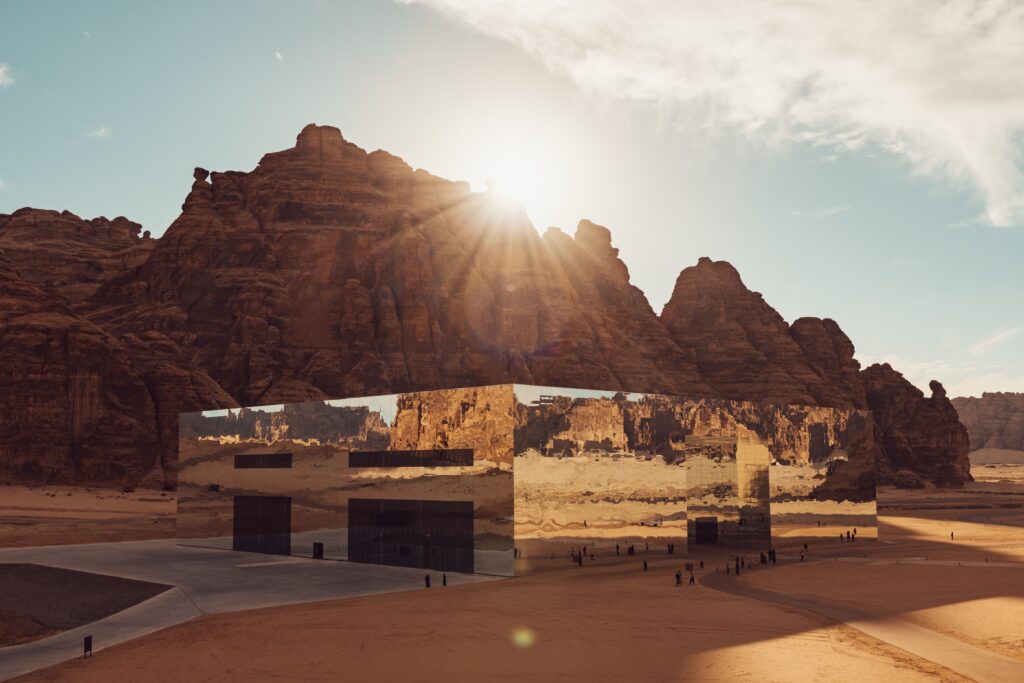AlUla World Archaeology Symposium 2024
Speakers advocate new approaches, with emphasis on including local communities and exploring new scientific avenues

Day 1 of the AlUla World Archaeology Symposium (AWAS 2024) featured insightful discussions on the history of mobile communities and offered a sneak preview of the Middle East’s first showing of masterpieces from the Museo Archeologico Nazionale di Napoli (MANN).
From 34 countries, AWAS 2024 has gathered 17 speakers and 80 delegates across archaeology, cultural heritage and related fields to discuss and debate the symposium theme “Moving forward: past, present and future in the archaeology and heritage of mobile communities”.
In opening remarks delivered in Arabic, Dr Abdulrahman Alsuhaibani, Vice President of Culture at the Royal Commission for AlUla (RCU), said: “We are here presented with a unique opportunity to explore the legacy of mobile communities. This is a truly global gathering bringing together a distinguished group of experts from across the world.”
Day One’s speakers focused on the power of new approaches to overcome challenges in exploring the archaeology and heritage of mobile communities from China to Botswana.
Highlights included keynote addresses by Dr Willeke Wendrich, Professor of Cultural Heritage and Digital Humanities, Polytechnic University, Turin, and Research Professor, Department of Near Eastern Languages and Cultures, University of California at Los Angeles (UCLA); and Dr Stefano Biagetti, ICREA Research Professor of Archaeology, Pompeu Fabra University, Barcelona.
Dr Wendrich said archaeologists studying mobile communities need to be sure they are listening to the members of those communities. For example, she said her early work on mobile communities “was too much about and not enough with.”
She added: “We should think of people we work with as research partners.”
For example, by asking members of Egypt’s Ababda nomad community to draw pictures of the things that mattered to them, she learned that what mattered to them was: things related to camels for the men; and things related to coffee and making a home for the women.
With this approach, she said, archaeologists can better understand the motivations of inhabitants past and present.
Dr Biagetti said new scientific applications can likewise provide clues about mobile and pastoral communities, which tend not to leave nearly as many material traces of habitation as settled communities.
Noting that pastoralists are among the world’s least understood groups, he said that biological and chemical analysis of residual materials such an ash dump or the soil of an abandoned corral can yield insights. For example, he said, at a 200-year-old archaeological site at Seoke, Botswana, these techniques showed where the earlier inhabitants had prepared their food.
The day concluded with a sneak preview for media of Masterpieces of the MANN, an exhibition of 15 stunning artworks from the Naples archaeological museum that will be open to the public from 7 Nov to 14 Dec during AlUla’s Ancient Kingdoms Festival. The masterworks on display range from the imperial to the martial: sculptures depicting Alexander the Great, Hadrian, Trajan and Julius Caesar, but also gladiators’ armour such as a helmet topped by a griffon, and greaves.
This is the first time that these masterpieces are presented in the Middle East. The showing will be a flagship event of the 2024 Ancient Kingdoms Festival and part of the AlUla Moments calendar of events.
AlUla is one of the world’s most active areas for archaeological exploration, with over 30,000 areas of archaeological interest identified and a dozen active research projects across a rich cultural landscape. In recent years RCU-sponsored research by Saudi and foreign archaeologists has shed light on aspects of AlUla’s ancient history, from the monumental structures known as mustatils to large-scale hunting traps known as ‘desert kites’, long-distance ‘funerary avenues’ that linked settlements and pastures, and Neolithic dwellings known as ‘standing stone circles’. Together the studies are showing that the early inhabitants of north-west Arabia were more connected to neighbouring regions than previously believed, and that their society was more complex than had been thought.


Comments are closed.